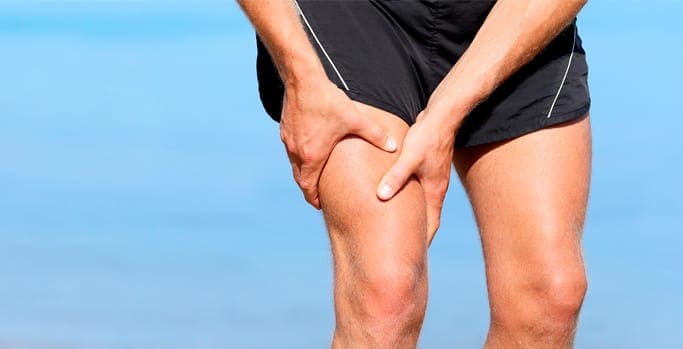August 14, 2023

Myofascial Tension and Locomotion
Muscular “stiffness” describes the tension sto walk or move efficiently without it.
Before our foot ever to kinetic energy.
Finally, as the foot leaves the ground, this energy (sto have a natural spring in our step, rather than making inefficient mechanical movements and pounding our feet with each step.
The greater the tension of your myofascial fibers are when your foot hits the ground, the more efficient you will be at storing and releasing kinetic energy. Various studies have examined the effects of leg power, stiffness, and strength on the speed of runners, including the studies of Lockie et al. (2011) and Bret et al. (2002).
Specifically, Bret et al. discovered that myofascial tensioning was the single greatest indicator of acceleration in the first 60 meters.
Similarly, Lockie et al. found that contact time and impulse efficiency were major indicato myofascial tensioning.
These are only two among many studies in recent years which have shown a strong relationship between muscular tension and running and sprinting performance (Lockie, 2015). Having a strong “spring” is an essential aspect of running or even moving efficiently. So where are these “springs” and how do they work?
Our body’s “springs” are located at the connection of the muscles and the fascial tissue. Intricately woven around all of our muscles and the surrounding tendons and ligaments is what is called a myofascial web. This web surrounds and interconnects with the muscles on three separate levels.
First of all, it forms the sheath of connective tissue surrounding the muscle as a whole, or the epimysium. Secondly, it forms the sheath of connective tissue surrounding the individual bundles of muscle fibers (fascicles), known as the perimysium. Finally, it forms the endomysium, or the sheath surrounding each individual muscle fiber or mycote.
This highly-integrated web of connective tissue is essential tore potential energy—in a sense, these are the “rubber bands” of the muscles.
This sto this tuning process as fascial tensioning.
Schleip et al. (2005) have also argued that, far from playing a simple passive role in sto overall musculoskeletal dynamics. This finding only further supports the importance of training the myofascial tissue for optimal performance, as this tissue affects many aspects of movement and basic locomotion.
You may have heard by now of training focusing on the myofascial web, or as it has also come to reduce ground contact time and improve ground force efficiency by improving the fascial tension and tuning of the myofascial web. However, much of this training advice has not extended beyond simple foam rolling and stretching.
To properly train the myofascial web requires training in rhythmic movements. Such movements are practiced in taiji and the emergent field of gyrotonics, for example. Both exercise systems emphasize continuous, flowing movements and decompression of the joints through moving in natural curving motions. By moving the joints in smooth, circular motions, such exercises optimize the efficiency of the joint movements which stretching and training the myofascial web.
Other exercise methods are also emerging which train the fascia and myofascial web and improve muscle tuning ability. One such method is EBFA’s barefoot training method, a whole-body method which integrates fascial tension zones through a technique called fascial tension stacking. By focusing on four fascial tension zones, the foot, the core, the shoulders, and the hands, the program looks to specific body types.
Bret, C., Rahmani, A., Dufour, A.-B., Messonnier, L., & Lacour, J.-R. (2002). Leg strength and stiffness as ability factors in 100 m sprint running. The Journal of Sports Medicine and Physical Fitness, 42(3), 274–281.
Lockie, R. G., Jalilvand, F., Callaghan, S. J., Jeffriess, M. D., & Murphy, A. J. (2015). Interaction Between Leg Muscle Performance and Sprint Acceleration Kinematics. Journal of Human Kinetics, 49, 65–74. http://doi.org/10.1515/hukin-2015-0109
Lockie, R. G., Murphy, A. J., Knight, T. J., & Janse de Jonge, X. A. K. (2011). Factors that differentiate acceleration ability in field sports athletes. Journal of Strength and Conditioning Research / National Strength & Conditioning Association, 25(10), 2704–2714. http://doi.org/10.1519/JSC.0b013e31820d9f17
Nigg, B. M. (2001). The role of impact forces and foot pronation: a new paradigm. Clinical Journal of Sports Medicine: Official Journal of the Canadian Academy of Sports Medicine, 11(1), 2–9.
Schleip, R., Klingler, W., & Lehmann-Horn, F. (2005). Active fascial contractility: Fascia may be able to contract in a smooth muscle-like manner and thereby influence musculoskeletal dynamics. Medical Hypotheses, 65(2), 273–277. http://doi.org/10.1016/j.mehy.2005.03.005
Dr. Lev Kalika is a world-recognized expert in musculoskeletal medicine. with 20+ years of clinical experience in diagnostic musculoskeletal ultrasonography, rehabilitative sports medicine and conservative orthopedics. In addition to operating his clinical practice in Manhattan, he regularly publishes peer-reviewed research on ultrasound-guided therapies and procedures. He serves as a peer reviewer for Springer Nature.
Dr. Kalika is an esteemed member of multiple professional organizations, including: